
Having finished the wonderful Blackwell series, I wanted to try some of Wadjet Eye’s other offerings. The Shivah was the company’s first foray into commercial games, but this isn’t the original version. This graphical overhaul was from 2013 and it visually matches the quality of the final Blackwell games.
The Shivah is most noteworthy for its unusual subject matter. How many other games have the player assuming the role of a mystery solving rabbi? Well, besides Crash Bandicoot 2: Cortext Strikes Back.
As far as adventure game mechanics go, this isn’t the best I’ve played. The puzzles mainly consist of clicking through dialogue trees to pick up on names and places that need to be searched out on the Internet. You’ll find yourself needing to take notes… like, actual pen-and-paper notes! I know, I know… like, who has time for that these days! However, the point of playing this isn’t for the challenge (although the final puzzle was infuriating at first, but a real a-ha moment when I realized what I needed to do). What shines here is the characters and story. The plot is not too deep, but I ended really hoping that Rabbi Stone would find the killer and, more importantly, re-discover his faith. Ew, did I just type that? Whatever, buy this game and give it a try.
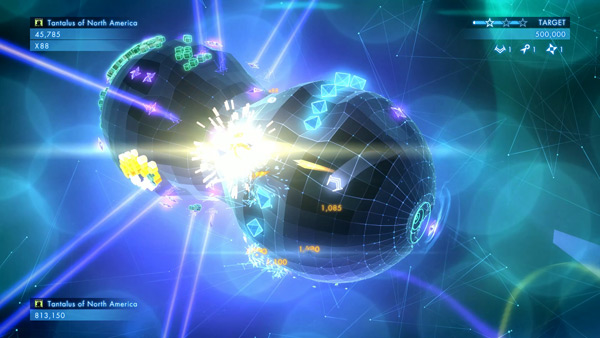
The original Geometry Wars was one of the purest, most exhilarating gaming experiences of the post-arcade era. It combined the visuals of Tempest with the frantic, twin-stick shooting of Robotron 2084 to form a thoroughly modern point-driven shooter. The Wii exclusive sequel Galaxies added level variety and the great risk/reward mechanic of collecting geoms to increase your point multiplier. It’s still the game that I play the most on my Wii.
The third game in the series builds on the Galaxies formula but with the mind-blowing twist of moving the game grid onto curving non-euclidean surfaces. The result is nothing short of spectacular. You are still technically moving in two dimensions but now you need to navigate around spheres, cylinders and other irregular solids. These new non-euclidean mechanics don’t seem like they would work, but controlling your ship feels completely natural. As the grid begins to fill with hundreds of enemies, if you are having a good run, you start to feel like Rainman as you rack up the points. Like the other Geometry Wars installments the screen starts to look like an insane iTunes music visualizer that somehow you are able to navigate. Highly recommended.

In 2002 Wire returned after over a decade of dormancy and once again they have changed their musical focus. They had largely dropped the emphasis on dance-floor beats and synths and returned to a song writing style that is not unlike the punk rock of Pink Flag. It’s a less minimal, solid-state version of 1977 Wire with a touch of their 80’s synths dribbled in here and there. Some would say it’s a return to form, but I never though Wire ever really “lost it.”
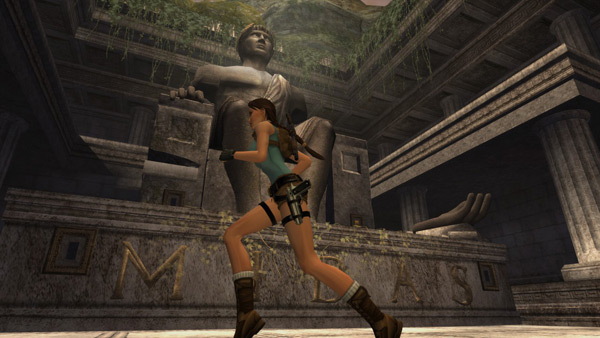
This was a rare case in which I finished a game that I had started years ago. I really enjoyed the Tomb Raider reboot that Crystal Dynamics did back in 2006 with Legend. I played that game as a freebie back when Game Tap was in its hey day and started Anniversary shortly thereafter but only got about 2/3rds the way through before it was taken off the free list. I only recently got it as a $1.99 game on Steam with the goal of finally finishing it.
Technically this is a re-imagining of the first Tomb Raider game using the newer game engine. Having never played the original, I am not sure how close it is to the source material. It feels a lot like Legend but there really is not much of an attempt to craft a story around the puzzle-platforming. The levels are pretty empty (especially when compared to the 2013 re-reboot). This feels more like a level pack than a major release. The game-play mechanics are well-established and solid, so it works simply as a fun diversion. I enjoyed most of it despite the lack only driving narrative motivation and I assume this is much smoother to play than the original. But I don’t think I will be going back and trying to get 100% completed on the entire game like I did with the last Tomb Raider.

Lloyd Bridges stars in this 1950’s film noir about an American returning to England after the war who becomes witness to a murder at the airport. Of course his gal pal is soon revealed as the prime suspect—with good reason, as we discover her connection with the dead man. This film was not terribly stylish but has its moments especially the magic show musical number and the plot had me until the very end. However, the ending ruined the movie for me. Major spoiler alert – It’s revealed that the entire movie was just a dream Bridges was having on the airplane ride to England. Terrible.
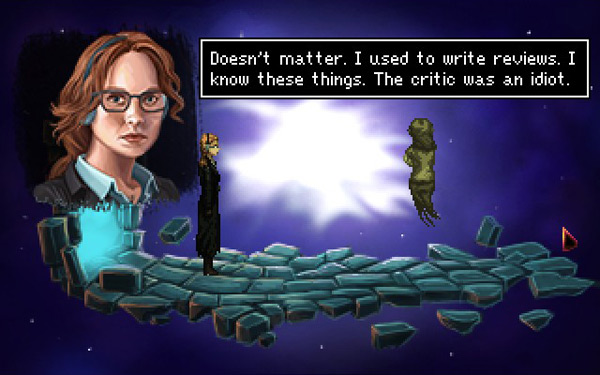
The fifth and final Blackwell game continues in the series’ tradition of thoughtful and interesting adventures that are light on the puzzles and big on character interactions. Technically, the games have come a long way. The graphics are top-notch and the voice acting is much improved. The games still are running on the freeware AGS (Adventure Game Studio) platform, which has its limitations. But, for the most part, these last few games in the series have been on par with the Lucasarts games of old.
Whereas previous games in the series offered small glimpses into actual New York stories and characters, this game focuses more on the fantastic. Most of the series’ lingering questions get answered, although sometimes you have to make sure to pay close attention to all the dialogue to pick up on the details (I have a tendency to get a little overzealous with my clicking). I felt most of the puzzles were fair with the exception of one where for some reason combining coffee and a rag makes you jump farther? Oh, post-spoiler spoiler alert.
The ending is satisfying and let me be the one-billionth reviewer to describe it “bittersweet.” By the climax, my entire family was crowded around the screen wanting to know what was going to happen next. The series has shown to be very entertaining to watch even for my pre-teen daughter (Although, be warned that the commentary contains some salty language—save that until the kids are in bed).
Wadjeteye has proven to be a top-notch developer and, since finishing Blackwell, I went on Gog.com a bought up most of the other games in their catalog. More pointing and clicking to come.
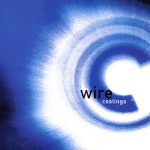
Coatings compiles outtakes and alternate mixes of songs from The Ideal Copy and A Bell Is a Cup… with a few Manscape outtakes. For the most part these mixes aren’t drastically different than the originals. My copy includes an extra disc that contains an excellent seventeen minute version of “Ambitious.”
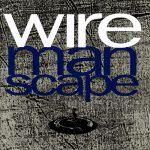
The final record of their mid-eighties incarnation has Wire drifting even closer to New Order territory. It’s taken me a while, but I think of have come to accept this release. It is certainly their weakest LP and a couple of songs like “Torch It” border on the unlistenable, but there are a couple of gems here. Most noteworthy are “Morning Bell,” “Children of Groceries,” and “You Hung Your Lights In The Trees/A Craftsman’s Touch.” You have to look towards Colin Newman’s solo electronica albums to guess how Wire might have evolved had they not taken a break at this point in their career.

Well, this isn’t the next Kingkiller book, but, fortunately, I wasn’t expecting that. The author himself goes to great length to basically apologize for the book in the introduction and again at the end. I get it. It’s something different. In any event, here we have the story of Auri, the girl who lives in the tunnels under the school. She’s a bit looney. The book reads like a manual on obsessive compulsive disorder as she goes about making sure objects are appropriate for the spaces she puts them. Wow, sounds like an awesome idea for a story, right? Sigh. Anyhow, the writing itself is colorful and does a good job drawing the portrait of Auri’s eccentricities, but it’s not exactly a page-turner. I get that he’s writing about a broken mind, but what do flowery lines like “It was hunkered down and sullen, like a forgotten kiln.” even mean?

This is a weird little release that contains alternative versions of many of the songs from A Bell Is a Cup and The Ideal Copy. These started of as live recordings and were then embellished in the studio. It’s not an essential record, but it’s worth a listen.










